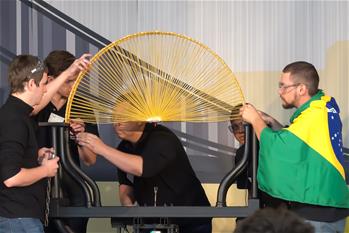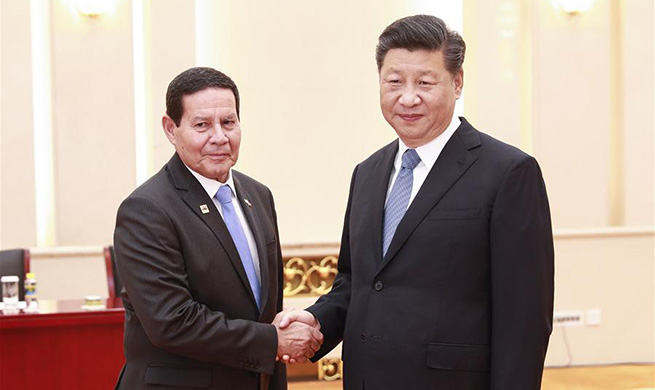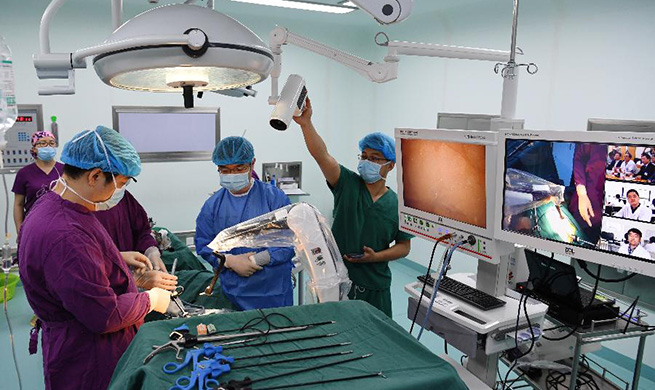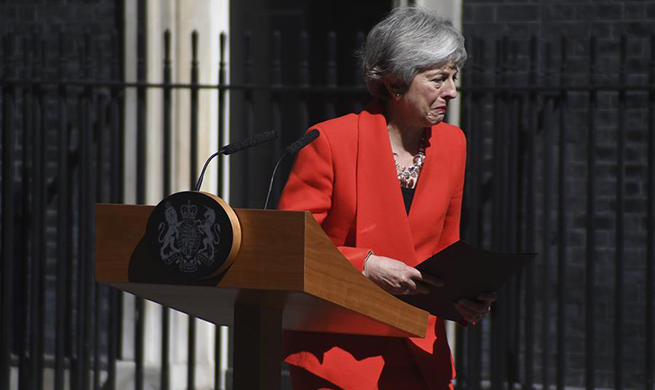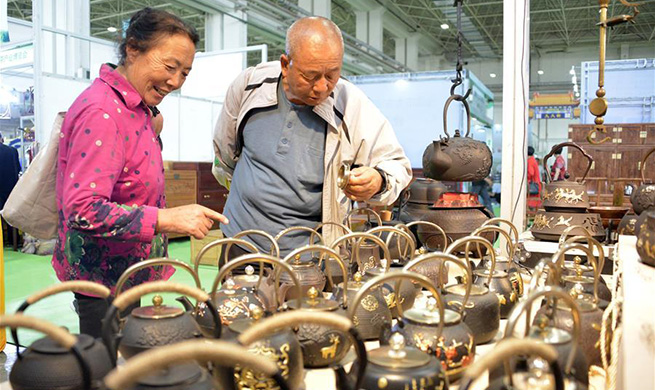BEIJING, May 24 (Xinhua) -- The trade friction provoked by the U.S. administration attempts to rein in China's development, experts said at a forum on the challenges and the future of the China-U.S. trade and ties.
Going against the trend, the U.S. provocation will not only backfire, but also hurt the international economic system, experts said.
Noting that the essence of trade rests on mutually beneficial and win-win cooperation, Justin Lin Yifu, dean of the Institute of New Structural Economics at Peking University, said: "The U.S. importing Chinese goods is not granting China a favor, but rather a choice of the market as Chinese imports are cheap in price and fine in quality."
Insisting on raising tariffs will disrupt international supply chains and divide global markets, and the hefty price that comes with it will eventually be paid by American citizens, according to Lin.
Expecting price hikes in the U.S. domestic market, experts said that America had paid the consequences for trade wars in the past.
In 1930, the U.S. rolled out the "Smoot Hawley Tariff Act," which raised the duties on imported goods dramatically to ease the worsening export trade and was widely blamed for having aggravated the Great Depression.
"Solving the so-called trade deficit issue has to focus on increasing savings and cutting down consumptions," Lin said, adding that increasing tariffs on China and other countries would only be counterproductive.
After raising tariff across the board, America found its trade deficit in goods and services surged 12.5 percent last year to 621 billion U.S. dollars, hitting the highest level in 10 years.
Another unwise decision of the U.S. administration is the restriction on the exports of high-tech products, which has contributed as one of the major reasons fueling the trade imbalance, experts said.
According to an analysis from an American institute, relaxing the exports restriction on civil high-tech products to China will approximately slash 35 percent of its trade deficit.
Together with the 20-percent overestimation in the U.S. offical trade deficit statistics, the overlooked services trade in which the U.S. has seen years of surplus and the other factors combined, the U.S. trade deficit with China is actually only one-third of the number it announced, experts noted.
"Since the beginning of the 21st century, especially after the 2008 international financial crisis, the U.S. economic society has fallen into a dilemma of dual economic structure with the country's high-tech and the traditional manufacturing sectors going separate ways," said Zhang Yuncheng, head of the World Economy Institute of China's Institute of Contemporary International Relations.
Described as the "economic dislocation," the traditional manufacturing industry's weaker competitiveness and not being able to provide quality jobs have led to a decreasing labour force participation rate, Zhang said.
Therefore, the series of U.S. actions against China is in fact a red-herring as its domestic structural problems are too difficult to resolve, he said. Enditem





